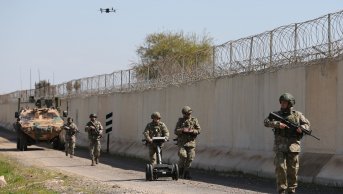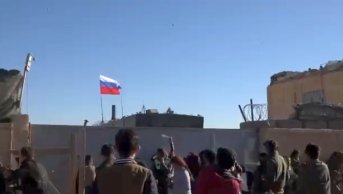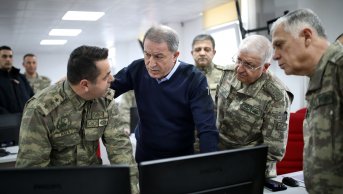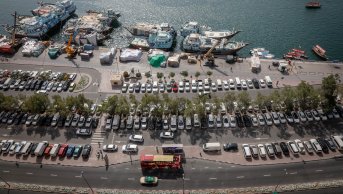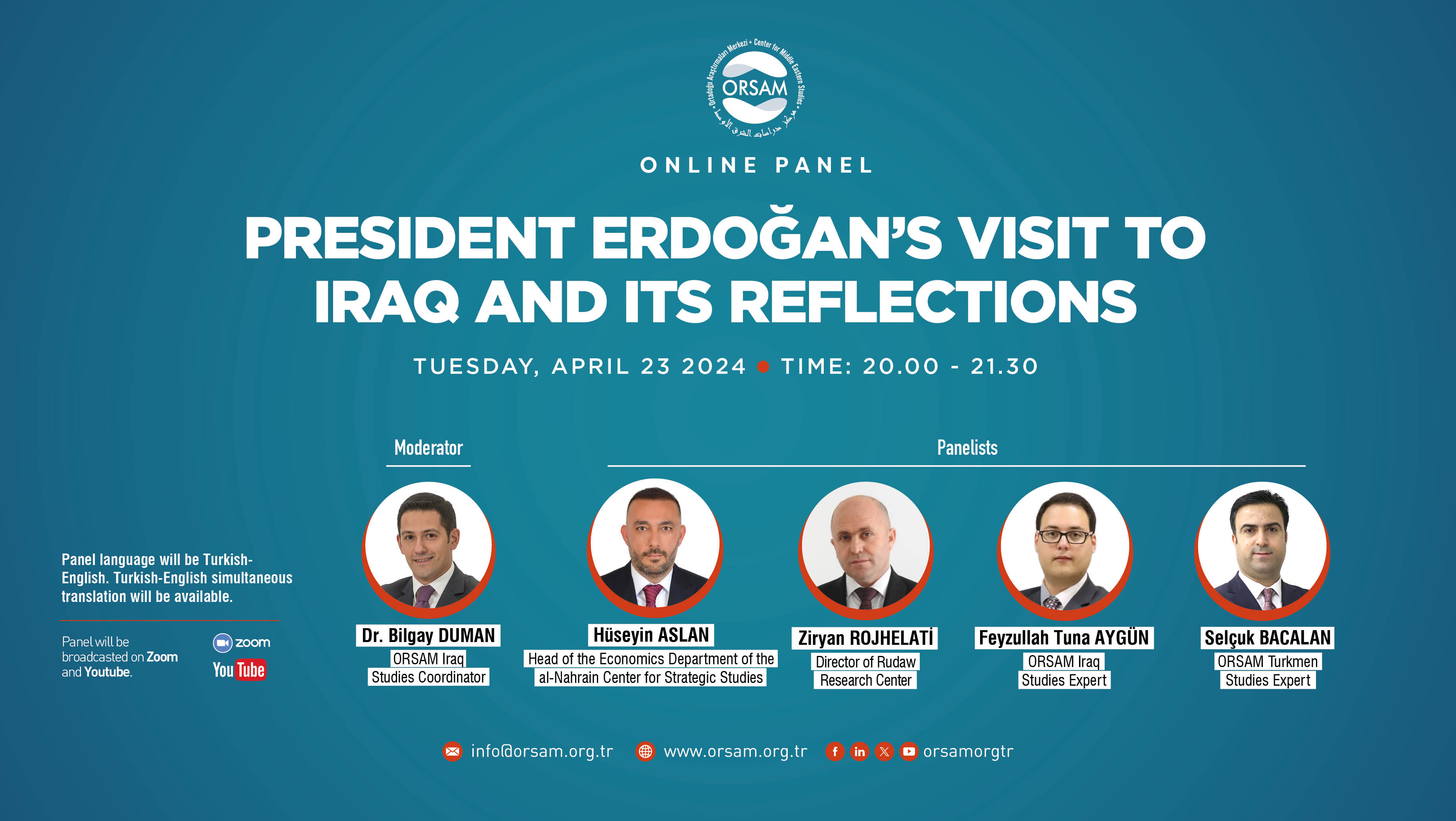Russia-US Race for Deir ez-Zor in Syria

As a continuation of the Astana period, in May 2017, Turkey, Russia and Iran signed an agreement to create de-escalation zones in Syria. According to the given agreement, it was decided to put an end to the conflict between the regime and the opposition forces in Syria, which goes on in Idlib and some parts of Hama, Homs, Daraa, Quneitra and Latakia provinces and in East Ghouta. This agreement differs from the previous ones in that the ceasefire lines will be clearly defined and, if necessary, the third party forces, particularly the guarantor countries, will take responsibility of peacekeeping on the conflict lines to supervise the armistice.
The de-escalation zones agreement seems to be a compromise which the conflicting parties are in need of with a view to realizing their own short-term goals in Syria, rather than a compromise that will pave the way for a lasting peace in the country. For, the main issue in the current circumstances in Syria is about who will control more areas. For this reason, the military struggle is still at the forefront and almost none of the belligerent parties have reached the borders they ultimately want to see in Syria.
The places standing out in terms of providing more area control in Syria are the Daesh regions. In terms of the control of the Daesh regions, there exists a race between the United States and Russia. At the centre of this race is Deir ez-Zor, located near the Iraqi border. Deir ez-Zor is significant in many aspects such as the natural resources it possesses, its location on existing and possible energy transmission lines and its being in a position to provide the Iraq-Syria geographical connection. Besides, we can say that the force which will take over Deir ez-Zor will control the eastern part of Syria and the Euphrates basin. Therefore, if the Syrian regime intends to return to Raqqa and al-Hasakah in the long run, it has to seize Deir ez-Zor. The United States also wants to take control of Deir ez-Zor in order to increase its share in “the Syrian pie" and to end the dreams of the Russian-Iranian-regime forces to return to the east of Syria. It can be said that the Iraqi central government forces could be added to the bloc led by Russia. As of the end of May, the forces affiliated to the Iraqi government announced that they had reached the border with Syria within the scope of the Mosul operation. If the Syrian regime forces can reach Deir ez-Zor in Syria, the Iraqi-Syrian connection will be provided.
As to the US, it is struggling to approach Deir ez-Zor through SDF/YPG from the north and by Daraa-based opposition forces from the southwest. SDF/YPG formed the Deir ez-Zor Military and Civil Councils in an environment where the operation for the siege of Raqqa was still going on, and declared that the goal after Raqqa will be this city. The Syrian Democratic Council (SDC), which we can refer to as the civil wing of the SDF, has begun to work on the civilian administration of Deir ez-Zor after the Daesh period. In fact, Riad Darar, an Arab from Deir ez-Zor, is one of the two co-directors of the SDC along with Ilham Ahmed representing PYD. On the other hand, Daraa-based Syrian opponents supported by US, Jordan and UK were also in a struggle for approaching Deir ez-Zor from the southwest throughout the month of May. While the Syrian opponents, who were rapidly advancing in desert areas where population and settlement are in low degrees, were moving towards Deir ez-Zor, Russia first carried out an air attack against this advance. What is more important is that the regime and Iran-backed militias launched an operation towards the Tanaff region to put an obstacle before the given progress. At that very time, the US carried out one of its rare attacks against regime forces in Syria and a convoy belonging to the Syrian army in the Tanaff region was bombed by US military aircraft. The United States announced that Iranian militias were among those who had lost their lives in the attack. However, this operation did not stop the regime forces and, for the moment, the progress of the Syrian opposition is stopped.
In fact, the limited but strategic control of the regime forces in Deir ez-Zor goes on. In these places like a small island within large Daesh zones, the regime forces have been making efforts to hold up for a long time. Russia is trying to back up the fragile regime resistance in these territories, where there is no territorial connections. So that Russia is conducting air campaign against Daesh along with the support she provides from air to the regime forces. The limited presence of the Syrian regime in Deir ez-Zor complicates the US plans. In fact, the best scenario for the US is that Daesh completely seizes Deir ez-Zor and, in its aftermath, the forces it supports liberate, as "freedom fighters”, the city from Daesh. Exactly due to this, the US that cooperates with YPG in its fight against Daesh, does not take measures against Daesh in Deir ez-Zor. It is even taken into account that when Raqqa is liberated from Daesh, the terrorists will escape to Deir ez-Zor. The said escape can put great pressure on the regime's existence by strengthening Daesh in Deir ez-Zor.
The Russian-backed forces aim to reach Deir ez-Zor through Palmyra. Actually, military plans regarding this aim was initiated months ago. Russian and Syrian commanders gathered in Damascus to discuss the details of the Deir ez-Zor operation and formed forces from Arab tribes as local partners. Nevertheless, just then, the Syrian opponents launched coordinated attacks on the Damascus city centre, Hama and Homs. These attacks showed, in a sense, the borders to Russia and the regime. Russia, Iran and the regime had to focus on the Damascus-based regime regions which are vital interest areas instead of heading towards the east of the country, and postponed the Deir ez-Zor operation.
De-escalation zones agreement has been signed in such an environment, and thanks to the agreement, after guaranteeing the west of the country, Russia can now wend her way to the east as much as possible. Moreover, for the Deir ez-Zor operation she will have the chance to move her forces deployed in the west to the east. Russia, within the body of the regime army, formed a power called the 5th Division directly under her own coordination and support. The number of soldiers in the division has reached 10,000 and the given number is expected to increase. The 5th Division is established for operations directed towards Daesh regions, especially Deir ez-Zor.
Syrian territory seems to have turned into a playground of the two great powers. This very situation limits the manoeuvre possibilities of regional powers, especially Turkey. The first priority of Turkey in Syria is terror and fight against YPG and Daesh for a long time. By the Euphrates Shield Operation, Daesh has stopped being an immediate threat. However, the YPG issue stands in front of Turkey as a growing threat. Due to the Raqqa operation, the YPG has had more US protection and military capabilities, in terms of number and quality, which the advanced armies can possess. What further complicates matters is that Russia also provides protection in Afrin and Manbij to YPG.
As a result, the picture looks like this: Russia and the United States have turned into the main forces shaping the developments in Syria. YPG is Turkey's top priority, and two major powers competing against one another across Syria have a common view upon YPG. This situation reveals the stalemate Turkey has been led into in Syria. However, it does not mean that Turkey's options in Syria have totally been exhausted. What Turkey can do in such an environment is to be able to gain as many concessions as possible about her own existensial problem by taking advantage of the disagreements between the two big powers. For this reason, it can be said that the intense rivalry between the US and Russia will offer more elbow area for Turkey.
The priorities of the US in Syria are to widen the US influence area against Daesh. Its local partner for this very aim is YPG. This situation puts the YPG in a strategic position in the eyes of the US. It can also be said that the US relation with YPG is not tactical as expressed by some US officials but long standing. Therefore, Turkey seems not to have any concession chances from the US in her struggle against YPG. On the other hand, Russia’s very priority and strategic ally is the Syrian regime although she provides protection to YPG and backs up the idea of giving federal region to Kurds in Syria. This situation paves the way for Turkey, even if limited, to cooperate with Russia rather than the US and to protect her interests in Syria. The Euphrates Shield Operation, which was coordinated with Russia to a certain level, can be given as an example.
The significance of the de-escalation zones agreement for Turkey is that Turkey will increase her effectiveness on the northern Syrian front. In the meantime, that the opposition forces close to Turkey provided the security in the Euphrates Shield region and in many parts of Idlib (except the parts under the control of al-Nusra derivative organizations) for a certain time, will increase its effect through the stabilization brought about by the non-conflict atmosphere, and the civil and soft power elements of Turkey. The increasing activities of Turkish public and non-governmental organizations in Idlib and the Euphrates Field region in the last weeks can be given as an example at this point. Another importance of the de-escalation zones agreement is that Turkey’s significance will increase in the eyes of Russia and the United States. Although not directly, the level of pressure that the opponents will exert in Latakia, Homs and Aleppo will impinge upon how the Deir ez-Zor race will end up. In this respect, Turkey’s influence on the opponents and the developments in Idlib, and the power of the military and administrative structure that the Euphrates Field Operation has produced are significant factors. Another meaning of the de-escalation zones agreement is that if Turkey is to choose between the two bad ones, she will prefer the Russian supported bloc. For, otherwise, a state-like structure controlling the entire Euphrates basin will emerge under the control of the YPG/PKK.
In Syria, no actors, including Russia and the United States, has the chance to establish an order on their own. However, even without a formula which regional and local actors may be pleased with, every actor has the capacity to disrupt the order. The complexity of the settlement of the Syrian crisis also stems from this.

